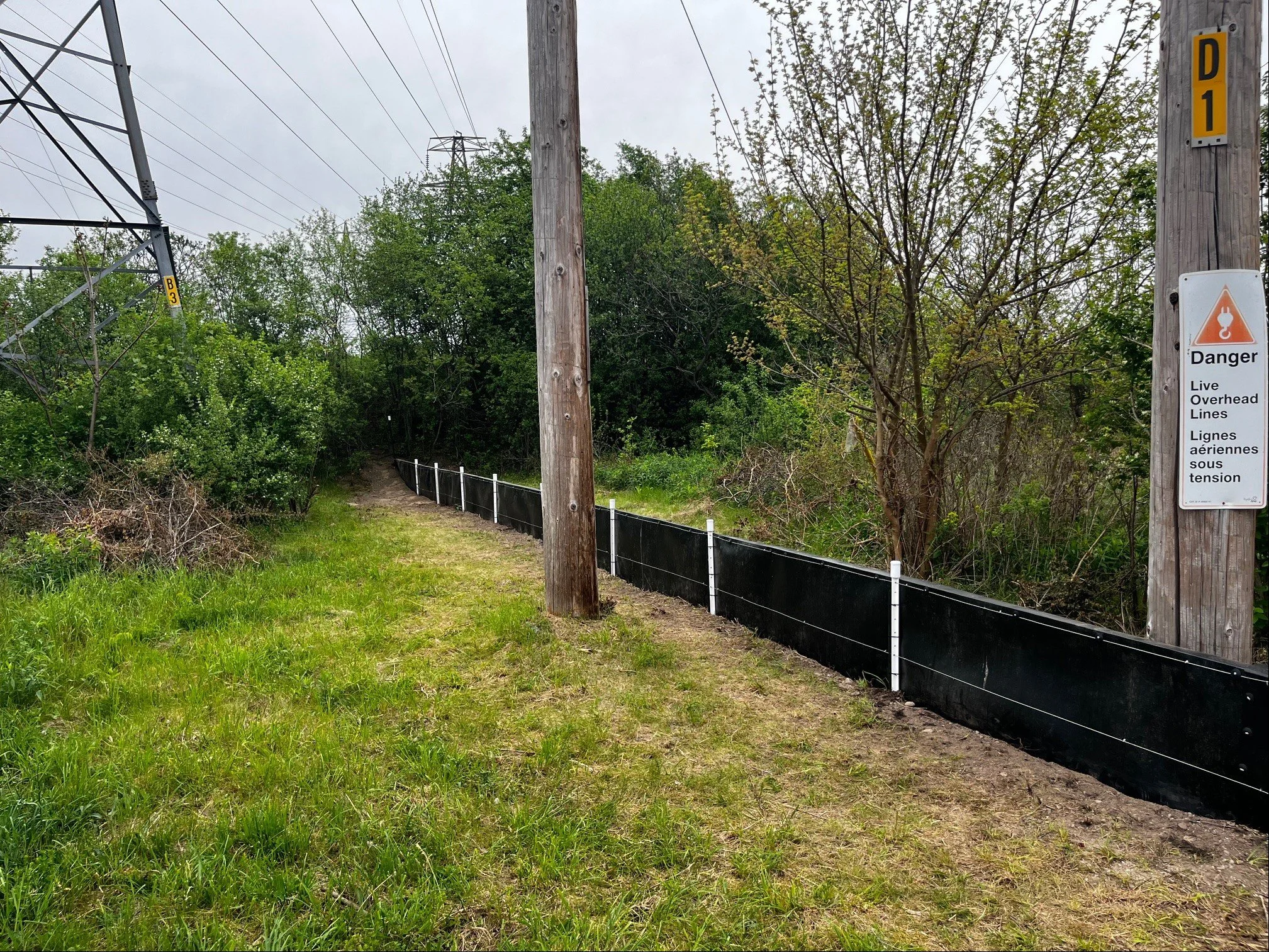
Toad Fencing
Animex wildlife fencing is designed and tested to control toad movement and exclude them from unwanted or dangerous areas. It optimizes natural amphibian behavior to encourage safe and fast movement away from the fence line and, unlike mesh fencing, inhibits climbing and entanglement.
Controlling toad movement
In 1998 it was estimated that one million vertebrates were killed daily on U.S. roads, many of them amphibians such as frogs, toads, and salamanders. With traffic volumes rising since then, the global scale of road-kill is severe, with further deaths at unfenced construction sites and railways. For salamanders, most fatalities occur during seasonal migrations between breeding pools and terrestrial habitats.
Because salamanders and newts return to the same pools each spring, they often have to cross roads and are highly vulnerable to traffic. Studies have documented tens of thousands of deaths on short road sections, and some populations face local extinction within decades. Construction sites pose similar threats, highlighting the need for effective exclusion fencing.
Transport engineers have a responsibility to limit these impacts. Properly designed fencing, combined with tunnels and other measures, can greatly reduce mortality at key migration points without disrupting natural life cycles. Fencing can also assist with population assessments before new development begins.
IMAGE: Early example of Animex fencing from 2004 containing a small population of Natterjack Toads during a translocation in the UK. Animex was also used during scientific comparison studies on elevated roads for Yosemite Toads by USGS in California, USA.
Top 5 toad species Animex is commonly used for:
Arroyo toad
Yosemite toad
Eastern spadefoot
Boreal toad
Fowler’s toad
Arroyo toad Anaxyrus californicus
Houston toad Bufo houstonensis
Natterjack toad Epidalea calamita
Yosemite toad Anaxyrus canorus
Fowler’s toad Anaxyrus fowleri
Great Basin spadefoot Spea intermontana
Great Plains toad Anaxyrus cognatus
Western toad Anaxyrus boreas
and more…
Height
40in is the product height most commonly used with toads
Standard above-ground installed height 22in / 550mm (with anti-climb and anti-dig lips)
We have various fencing products suitable for toads
Temporary
Recommended for short-term projects between 1-5 years but has an anticipated lifespan of 25 years.
Guide Price: USD $4 per ft / CAD $18.50 per m
Semi-permanent
Recommended for long-term projects of approximately 15 years but has an anticipated lifespan of 50 years.
Guide Price: USD $7.50 per ft / CAD $37 per m
Permanent
Recommended for long-term projects of approximately 25 years but has an anticipated lifespan of 50 years.
Guide Price: USD $30.50 per ft / CAD $153.50 per m
Guide prices are based on Animex fencing material and standard fixings and fasteners. This does not include support posts or installation. AMX-48 or a smaller customized, unlisted product may be more appropriate for some projects. Please contact us if you have any concerns or questions about the height or type of fence that is best for your project.











